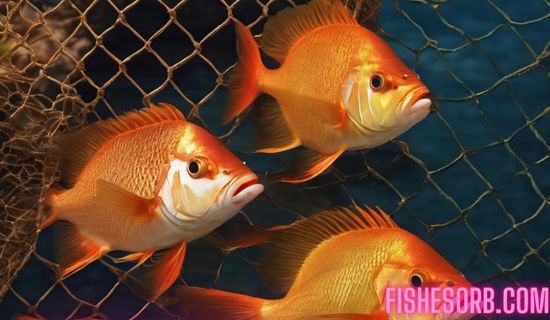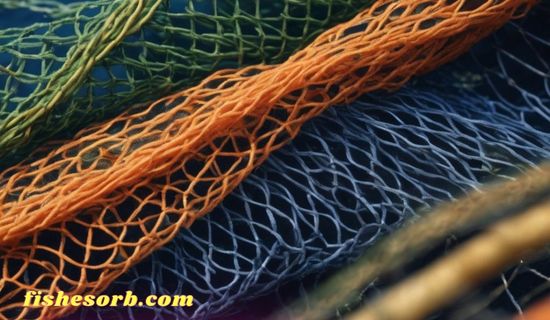Introduction:
Fish nets have been an integral part of fishing practices for centuries, playing a crucial role in ensuring a bountiful harvest for fishermen worldwide. This article dives deep into the world of fish nets, exploring their types, ecological impact, technological advancements, and the challenges faced by the industry.
Types of Fish Nets:
Gill Nets: Known for their vertical panels of netting, gill nets are designed to entangle fish by their gills. This section explores their effectiveness and potential drawbacks.
Seine Nets: Often used in shallow waters, seine nets encircle schools of fish. We delve into the intricacies of seine netting and its historical significance.
Trawl Nets: Widely used in commercial fishing, trawl nets are dragged through the water to catch fish. The article discusses their impact on marine ecosystems.
Cast Nets: A popular choice for small-scale fishing, cast nets are thrown by hand. Here, we explore their versatility and suitability for various fishing scenarios.
The Importance of Nets in Fishing:
Sustainable Fishing Practices: Highlighting the role of nets in sustainable fishing and the importance of balancing environmental conservation with economic interests.
Economic Impact: Examining how the use of nets contributes to the economic stability of fishing communities and industries.
How Fish Nets Work:
Mesh Size and Selectivity: Explaining the significance of mesh size in fish nets and how it affects the selectivity of the catch.
Operation Techniques: Providing insights into the different techniques employed in using fish nets, from setting them to hauling in the catch.

Environmental Impact:
Concerns and Challenges: Addressing the environmental concerns associated with fish netting, including bycatch and habitat disruption.
Mitigation Measures: Discuss efforts and innovations aimed at minimizing the negative impact of fish nets on marine ecosystems.
Advances in Fish Net Technology:
Eco-Friendly Materials: Exploring the use of sustainable materials in modern fish net construction and its positive impact on the environment.
Smart Nets and IoT Integration: Unveiling the technological innovations in fish nets, such as smart nets that utilize IoT for improved efficiency and sustainability.
Choosing the Right Net for fishing:
Factors to Consider: Offering guidance on selecting the appropriate fish net based on factors like target species and fishing conditions.
Matching Nets to Fishing Conditions: Providing practical advice on how to match. nets to specific fishing environments for optimal results.

Fish Net Maintenance:
Cleaning and Repairs: Outlining essential maintenance practices to prolong the lifespan of nets and ensure their effectiveness.
Prolonging Lifespan: Tips and tricks for fishermen to extend the longevity of their fish nets through regular maintenance.
Regulations and Compliance:
International Standards: Examining global standards for fish net usage and their implications on the fishing industry.
Local Regulations: Discussing the importance of adhering to local regulations to promote responsible fishing practices.
Challenges in the Net for fishing Industry:
Overfishing: Addressing the challenge of overfishing and its potential consequences on fish populations and ecosystems.
Technological Disparities: Exploring how disparities in technology access can affect the fishing industry and exacerbate existing challenges.

Future Trends in Fish Net Development:
Sustainable Innovations: Predicting upcoming innovations in fish net technology that prioritize sustainability and environmental responsibility.
Technological Advancements: Discuss how technological advancements will shape the future of fishnet design and usage.
Case Studies:
Success Stories: Showcasing instances where effective net strategies have led to positive outcomes for both fishermen and the environment.
Lessons Learned: Extracting valuable lessons from past case studies to inform future approaches to fish netting.
The Global Market for Fish Nets:
Key Players: Identifying major players in the fish net industry and their contributions to market trends.
Market Trends: Analyzing current and projected trends in the global fish net market, including factors influencing demand.
Tips for Fishermen Using Nets:
Best Practices: Offering practical tips for fishermen to optimize their fish net usage while minimizing negative environmental impact.
Safety Measures: Emphasizing the importance of safety precautions for fishermen working with nets to prevent accidents and injuries.
Conclusion
In conclusion, fish nets continue to be a vital tool for fishermen, balancing the needs of communities with ecological sustainability. As technology evolves, so too will the methods and materials used in fish net construction, paving the way for a more environmentally conscious and efficient fishing industry.

FAQs:
- Are fish nets harmful to marine life?
- Fish nets can pose risks to marine life if not used responsibly. However, sustainable practices and innovations are mitigating these concerns.
- What factors should be considered when choosing a fish net?
- Factors such as mesh size, target species, and fishing conditions should be considered to select the most suitable fish net.
- How can fishermen contribute to environmental conservation while using fish nets?
- Fishermen can adopt sustainable fishing practices, adhere to regulations, and participate in conservation initiatives to minimize environmental impact.
- What role does technology play in the future of fish netting?
- Technology, including IoT integration and eco-friendly materials, is driving the future of fish net development, promoting efficiency and sustainability.
- Where can I learn more about responsible fish netting practices?
- For more information on responsible fish netting practices, you can refer to environmental organizations, government guidelines, and industry publications.


